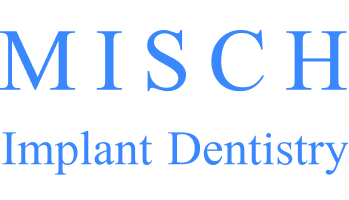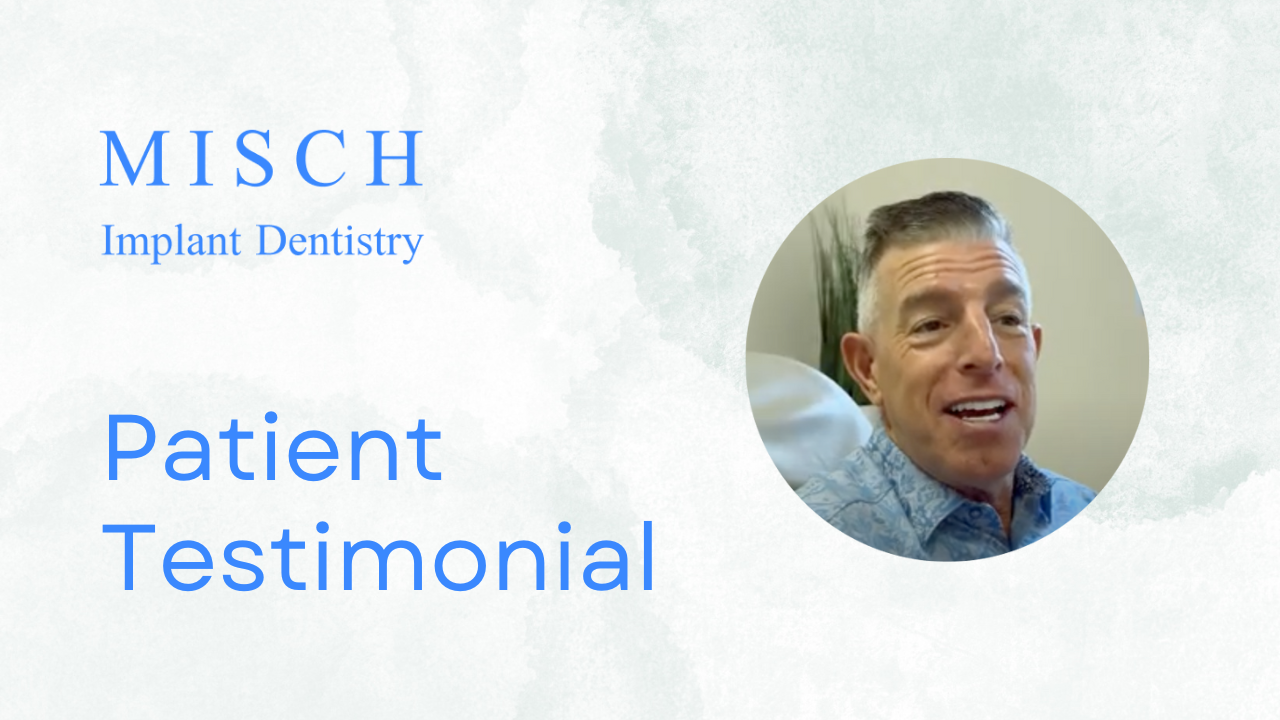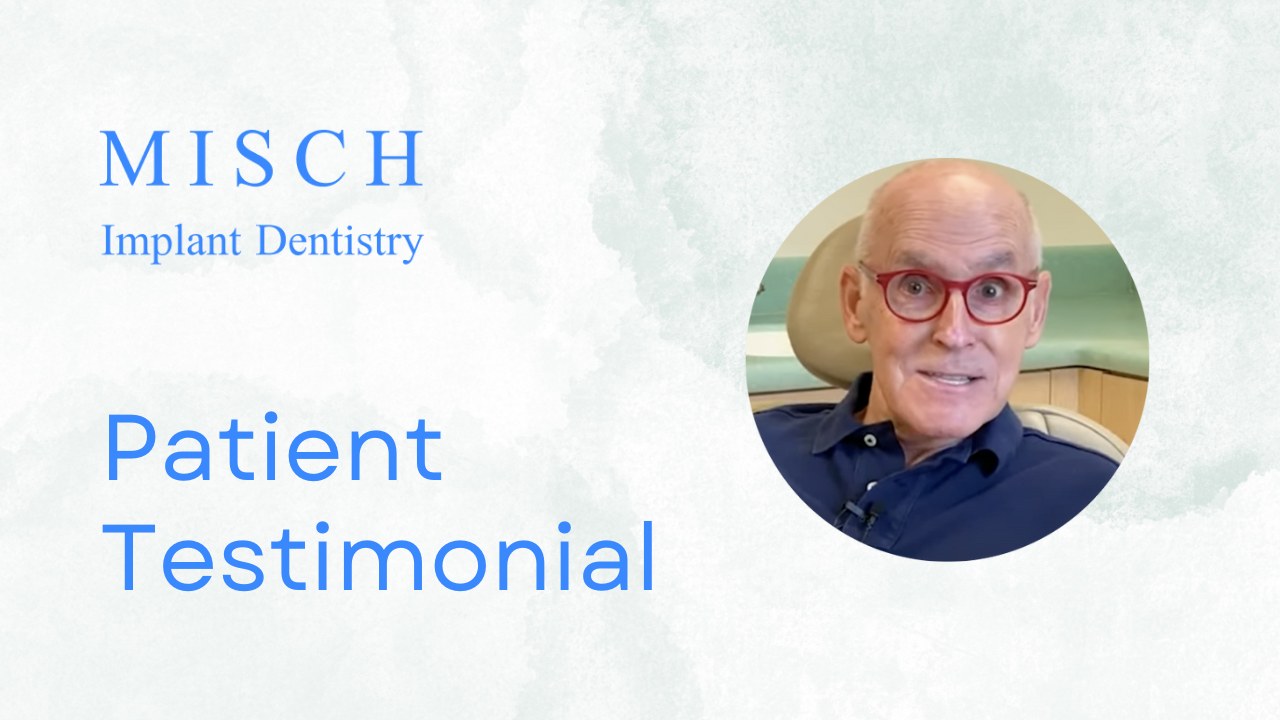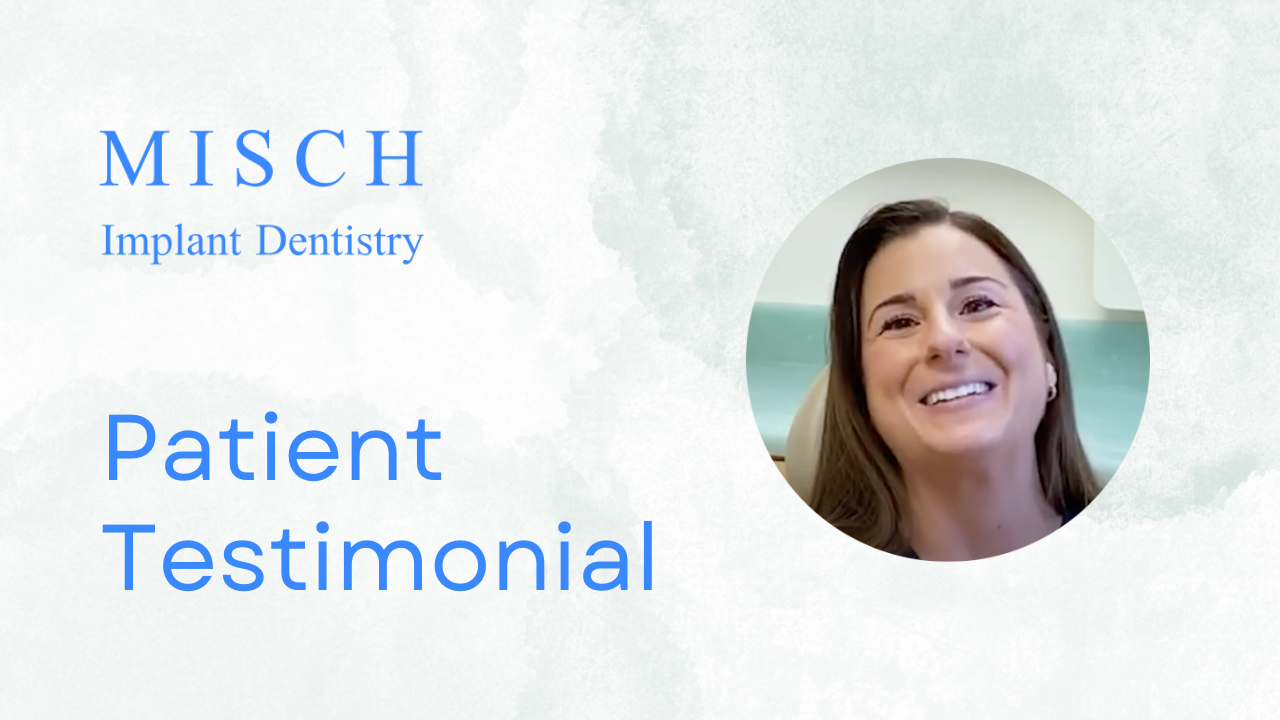

What is Periodontics?
Periodontics is the dental specialty that concentrates on the supportive structures surrounding the teeth. A periodontist is a dentist with a specialized focus on preventing, diagnosing, and treating gum disease. In greater detail, periodontal disease is an infection affecting the tissues responsible for anchoring and encasing the teeth, including the gums, ligaments, and bones. Periodontal disease is a significant contributor to tooth loss.
Why Should I Choose A Board-Certified Periodontist?
Dr. Maggie Misch-Haring, a periodontist at Misch Implant Dentistry, proudly holds the esteemed title of Board-Certified practitioner. This designation underscores her unwavering commitment to upholding the highest standards in periodontics and her dedication to continuous learning through ongoing education. To maintain this prestigious status, Diplomates like Dr. Misch-Haring engage in continuous learning and periodic testing, ensuring they remain up-to-date and proficient in their field, consistently elevating their expertise and skills.
The rigorous and structured board certification process, along with ongoing certification, provides patients with confidence in receiving top-tier care. Board-certified periodontists excel in both periodontology and dental implant surgery. For informed consumers, assessing healthcare providers’ qualifications, education, and certifications is essential. Confirming their training originates from an accredited multi-year program helps gauge their expertise, and evaluating the standards of the certification body is a valuable means of assessing your provider’s competence.
Periodontics Treatment Options in Sarasota
At Misch Implant Dentistry, we offer a suite of periodontal treatment options to address the underlying causes of your gum issues.
Free Gingival Grafts
A free gingival graft (FGG) is a common surgical procedure in periodontics and oral surgery used to treat gum issues. It involves transplanting tissue from the palate to thicken gum tissue, improve gum health, and prevent further recession.
- Patient Evaluation: Before recommending a free gingival graft, a periodontist or oral surgeon assesses the patient’s oral health. This includes evaluating the extent of gum recession, the presence of thin or fragile gum tissue, and any associated dental issues.
- Tissue Harvesting: During the procedure, a small section of tissue (graft) is carefully removed from the patient’s palate. This tissue is selected because it has a similar structure to gum tissue and is typically the best match for grafting purposes.
- Graft Placement: The harvested tissue is then placed at the site where gum recession or thinning has occurred. This is typically done in areas where there is a risk of further recession or to prepare the gums for other dental procedures, such as dental implant placement.
- Suturing: The graft is sutured (stitched) into place to ensure it remains secure and stable during the healing process.
- Healing and Integration: Over time, the transplanted tissue begins to integrate with the patient’s existing gum tissue, effectively increasing the thickness of the gum in the treated area. This helps protect the teeth, prevent further recession, and improve the overall health and appearance of the gums.
Free gingival grafts are ideal for those with thin or receding gum tissue, addressing sensitivity, aesthetics, and reducing gum disease risk by adding tissue. While effective, they involve surgery and post-operative care. Consult a periodontist or oral surgeon to assess suitability for your gum concerns.
Connective Tissue Grafts
A connective tissue graft in dentistry, particularly in periodontics, treats gum issues by transplanting tissue from the palate to increase gum volume, cover exposed tooth roots, and enhance gum health and appearance.
Here’s a more detailed explanation of the procedure:
- Patient Evaluation: Before recommending a connective tissue graft, a periodontist assesses the patient’s oral health, focusing on areas with gum recession, thinning, or other gum-related concerns.
- Tissue Harvesting: During the procedure, a small piece of connective tissue is carefully removed from the palate. This tissue is selected because it contains collagen and fibrous tissue that can help support and strengthen the recipient site.
- Graft Placement: The harvested connective tissue is then placed at the site where gum recession or thinning has occurred. This tissue provides additional support and volume to the existing gum tissue.
- Suturing: The graft is securely sutured (stitched) into place to ensure it remains stable during the healing process.
- Healing and Integration: Over time, the transplanted connective tissue integrates with the patient’s own gum tissue, effectively increasing gum thickness, protecting exposed tooth roots, and enhancing gum health and appearance.
Connective tissue grafts treat problems like receding gums, which cause tooth sensitivity, aesthetics concerns, and higher gum disease risk. This procedure adds healthy tissue to the area to address these issues. Post-operative care is vital, and consultation with a qualified dental professional determines suitability for an individual’s gum concerns.
Alloderm Tunneling Grafts
Alloderm tunneling grafts, also known as AlloDerm grafts, are a gum grafting procedure in periodontics and oral surgery. They utilize AlloDerm, a human tissue graft sourced from donors (usually cadavers), processed to remove cells and antigens, to enhance gum tissue in areas with recession or thinning.
Here’s how Alloderm tunneling grafts work:
- AlloDerm Material: AlloDerm is a tissue graft derived from human donor tissue. It is processed to remove living cells and antigens, reducing the risk of immune rejection when used in patients.
- Patient Evaluation: Before the procedure, a periodontist evaluates the patient’s oral health, focusing on areas with gum recession or other gum-related concerns.
- Tunneling Technique: The “tunneling” part of the name refers to the surgical technique used. Instead of making a large incision, a tunnel is created beneath the existing gum tissue in the area requiring treatment. This minimizes trauma to the patient’s own gum tissue.
- AlloDerm Placement: The processed AlloDerm graft is placed within the tunnel created in the gum tissue. It is positioned to augment or repair the gum tissue, covering exposed tooth roots and improving the overall health and aesthetics of the gums.
- Suturing: The graft is securely sutured (stitched) into place to ensure it remains stable during the healing process.
- Healing and Integration: Over time, the AlloDerm graft integrates with the patient’s own gum tissue. It supports the growth of new tissue, effectively increasing gum thickness, covering exposed tooth roots, and enhancing gum health and appearance.
Alloderm tunneling grafts have advantages, like avoiding tissue harvesting from the patient’s palate, reducing post-op discomfort and complications. They treat gingival recession, addressing tooth sensitivity, aesthetics, and gum disease risk. Proper post-op care is crucial, and suitability should be assessed by a qualified dental professional.
Contact us today
to schedule an initial consultation & exam.
Your consultation will include an examination of everything from your teeth, gums and soft tissues to the shape and condition of your bite. Generally, we want to see how your whole mouth looks and functions. Before we plan your treatment we want to know everything about the health and aesthetic of your smile, and, most importantly, what you want to achieve so we can help you get there.
Frequently Asked Questions
If gum disease is detected early enough, it can be reversed with proper treatment. However, if allowed to develop into periodontal disease, your doctor will be able to treat it and stop the spread of infection, but any recession or tissue damage cannot be reversed.
The most common early sign of gum disease is red, puffy gums. If you’re gums feel tender and look a little swollen and irritated, contact our Sarasota office as soon as possible to schedule your consultation.
Thanks to local anesthetics, gum grafting procedures are virtually painless. As the anesthetic wears off, you may feel some sensitivity and discomfort. Many doctors prescribe pain medication to combat this.
With proper care and good dental hygiene, you can expect your gum graft to last for the rest of your life. A gum graft is made of living tissue that fuses to the surrounding tissue, forming a permanent bond.
Expect 1 to 2 weeks for a complete recovery following a gum grafting procedure. Complications from gum grafts are exceedingly rare. But if infection occurs, or the graft comes loose, make sure to contact your doctor immediately to address the issue.
Periodontal disease, often referred to as gum disease, can be a silent threat to your oral health. Symptoms, particularly pain, may not become noticeable until the disease has advanced significantly. Nevertheless, it’s vital to stay vigilant for potential warning signs, which encompass red, swollen, or tender gums, bleeding during oral hygiene routines, gum recession, loose teeth, the presence of pus, mouth sores, persistent bad breath, changes in your bite, and alterations in denture fit. Should you observe any of these indications, it’s imperative to reach out to your dentist or periodontist promptly for a thorough evaluation and necessary treatment to preserve your oral well-being.
Plaque is the sticky, colorless film that constantly forms on your teeth. Bacteria live in plaque and secrete acids that cause tooth decay and irritate gum tissue. This irritation causes an inflammatory reaction by your body that can eventually lead to gingivitis and periodontal disease. If plaque is not removed regularly by tooth brushing and flossing, it hardens to create calculus (also known as tartar). Calculus cannot be removed with a toothbrush; only a dental professional can remove it during an oral cleaning. To keep plaque and calculus under control, it is essential to brush your teeth twice every day, floss at least once every day, and see your dental professional for regular cleanings.
After graduating from dental school, all periodontists must undergo an additional specialized training period of two to three years in the field of periodontics. However, certain periodontists choose to pursue board certification, which is administered annually by the American Board of Periodontology. Achieving board certification in periodontology signifies a practitioner’s exceptional accomplishments that go beyond the mandatory educational prerequisites of the specialty. This includes showcasing a comprehensive expertise in all aspects of periodontal disease and treatment, as well as proficiency in dental implant placement. To maintain this esteemed certification, periodontists are required to recertify every six years.
The best way to prevent periodontal disease is to take good care of your teeth and gums at home. This includes brushing your teeth after every meal and before bedtime, flossing at least once each day, and seeing your dentist or periodontist for regular exams twice a year. Spending a few minutes a day on preventative measures may save you the time and money of treating periodontal disease!









